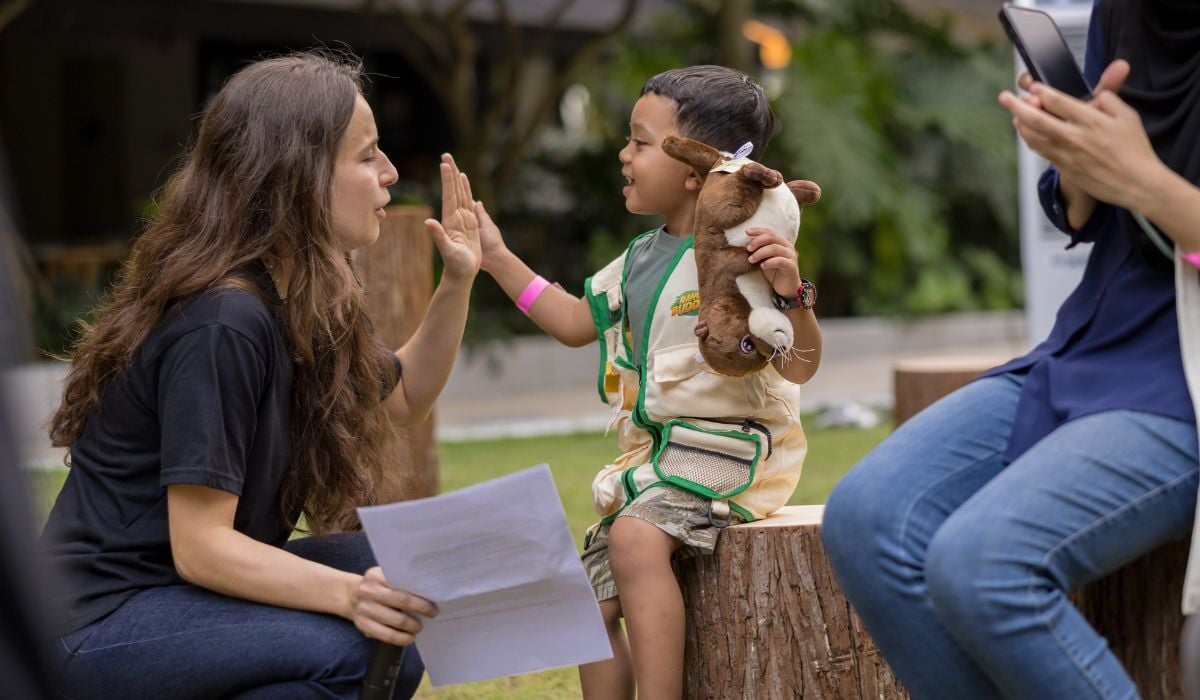5 tips to help kids conquer the fear of failure: Expert Q&A
Failure can be scary. As a parent, you want your children to be confident and resilient in learning new things, but sometimes, the fear of making mistakes holds them back.
We sat down with Dr Jacqueline Chung, Ph.D, Early Childhood Education, to discuss why children struggle with the fear of failure, what parents can do differently to support them and how small changes in mindset can make a big difference.
The fear of failure can hold children back from trying new things. From your experience, why do so many children struggle with this fear?
There are so many reasons! First, every child is different. Some are naturally adventurous and jump right in, while others prefer to observe before trying something new. Both approaches are completely normal!
But a huge factor is experience. If a child has a history of small successes, they begin to feel competent and confident. But if they’ve been discouraged or have heard a lot of “Be careful!” or “Don’t do that!” they may become hesitant.
Children also pick up on expectations very quickly, whether from parents, teachers, or society. If they sense that only perfect is acceptable, they may decide, I’d rather not try than risk failing. Children are born curious to varying degrees but their experiences can lead to some becoming perfectionists, afraid that if they don’t get something exactly right, they’ll disappoint someone.
It all comes down to how failure is framed. If mistakes are seen as a big deal, kids will avoid them. But if mistakes are just part of learning? That’s a game-changer.
Tip 1: Shift your own mindset first
How parents handle failure themselves influences their children. Can you explain why this is such a powerful factor?
Absolutely! Children don’t just listen to what we say, they copy what we do. Think about it: If a parent spills their coffee and reacts with “Ugh, I’m so careless,” what is the child learning? But if they laugh and say, “Oops! I guess I’ll be more careful next time,” that sends a completely different message.
Children are always watching. If they see us approach challenges with resilience, they’re more likely to do the same. But if they see frustration, avoidance, or fear, they absorb those reactions, too.
Many adults don’t even realise they might be modelling fear of failure. What are some common ways parents unknowingly pass down this fear?
Oh, this happens all the time, often with the best intentions! Here are a few ways parents pass on a fear of failure without realising it:
• Overreacting to mistakes – If a child spills something and we gasp or scold, they start thinking mistakes are bad.
• Saying “I was never good at that either” – This might sound reassuring, but it actually tells kids, "Some people just aren’t good at things", instead of "You can improve with effort".
• Blaming luck – If we say, “You got lucky!” instead of “Wow, you worked hard for that!” kids may believe success is out of their control.
• Avoiding challenges ourselves – If we always play it safe, our kids will learn to do the same.
Tip 2: Normalise making mistakes
What are some simple ways parents can change their own mindset about failure, so they can set a healthier example for their children?
A great trick is to make talking about mistakes normal at home. Some families have a light-hearted, weekly “mistake-sharing” dinner where everyone shares something they messed up that week and what they learned from it. It teaches kids that mistakes aren’t shameful. They’re just part of life.
Also, how we praise our kids matters. Instead of saying: “You’re so smart!” (which can make kids afraid to lose that label), say: “I love how you kept trying even when it was tough.” It teaches them that effort, not just results, is what matters.
And finally, parents need to be kind to themselves. If you make a mistake, say out loud, “That didn’t go as planned, but I’ll try again tomorrow.” Kids need to hear that it’s OK to be imperfect.
I love the idea of making failure a fun and normal topic at home. Can you share some creative ways families can do this other than around the dinner table?
• Tell stories of famous failures – Talk about people like Thomas Edison and Dr Seuss, who faced rejection many times before succeeding. Their resilience in the face of failure led to their ultimate success. That’s inspiring for children to model and to know that success doesn’t always come straight away.
• Read books or watch movies where characters overcome challenges – Stories like this help kids see failure as normal and as part of growth rather than the end of the road.
• Play games where failure is normal – Board games and puzzles are great for teaching resilience. Parents can even model gracious losing!
Tip 3: Redefine success at home
Parents naturally want to encourage and praise their children, but certain types of praise can actually backfire. You mentioned before about praising effort rather than results or state. What is the difference, and why does it matter?
Praising results sounds like: “You got an A! You’re so smart!” It seems positive, but it can create a fixed mindset, where kids believe their ability is set in stone. If they struggle later, they might think, I must not be smart enough, and give up.
Praising effort sounds like: “I saw how hard you worked on this!” This builds a growth mindset, where kids understand that improvement comes through effort. They’ll be more willing to take on challenges and keep going when things get tough.
Some parents might worry that if they don’t celebrate achievements, their child won’t be motivated. How can parents balance praising effort only when warranted while still celebrating success?
Celebrate success without overdoing it. If kids get excessive praise every time they achieve something, they may start relying on external validation instead of feeling proud of their own effort. The praise also becomes expected and meaningless.
Instead of “Wow, that’s the best drawing I’ve ever seen!” say “I love how you kept working on that, even when it was tricky.” The focus stays on their persistence, not just the outcome.
Tip 4: Create safe-to-fail zones
Some children only experience failure in high-pressure environments like exams or competitions. How does this shape their relationship with failure?
If failure only happens in high-stakes situations, kids start associating mistakes with stress and pressure. That’s why creating low-stakes opportunities for failure at home is so important! Make it a normal part of life.
What are some “safe-to-fail” activities parents can introduce at home?
• Art projects – Encourage kids to turn mistakes into part of their artwork instead of erasing them.
• Cooking or baking – If a recipe doesn’t turn out as expected, laugh and figure out what went wrong.
• Outdoor activities – Climbing, biking, or gardening teach kids that some things are out of our control, and that’s OK!
What’s a good way for parents to react when a child makes a mistake in one of these low-stakes activities?
Stay positive and curious! Instead of, “Oh no, that didn’t turn out right,” ask: “What do you think happened? What could we do differently next time?” It shifts their mindset from fear to problem-solving.
Tip 5: Talk it out
If there’s one thing you want parents to take away from this conversation, what would it be?
Talk to your child. Ask how they feel about failure, challenges and trying new things. When kids feel understood and supported, they’re far more likely to take calculated risks and build confidence.
What’s one small step parents can take this week to start helping their children build a healthier relationship with failure?
Start naming emotions. When your child is nervous, instead of brushing it off, say: “You’re nervous and that’s normal. What’s making you feel that way?” When kids learn to recognise and talk about their feelings, they gain the tools to manage them.
At the end of the day, raising resilient kids isn’t about avoiding failure. It’s about showing them how to grow from it.
Children build resilience and confidence through purposeful play. Check out what Ranger Buddies missions your child can go on today!



